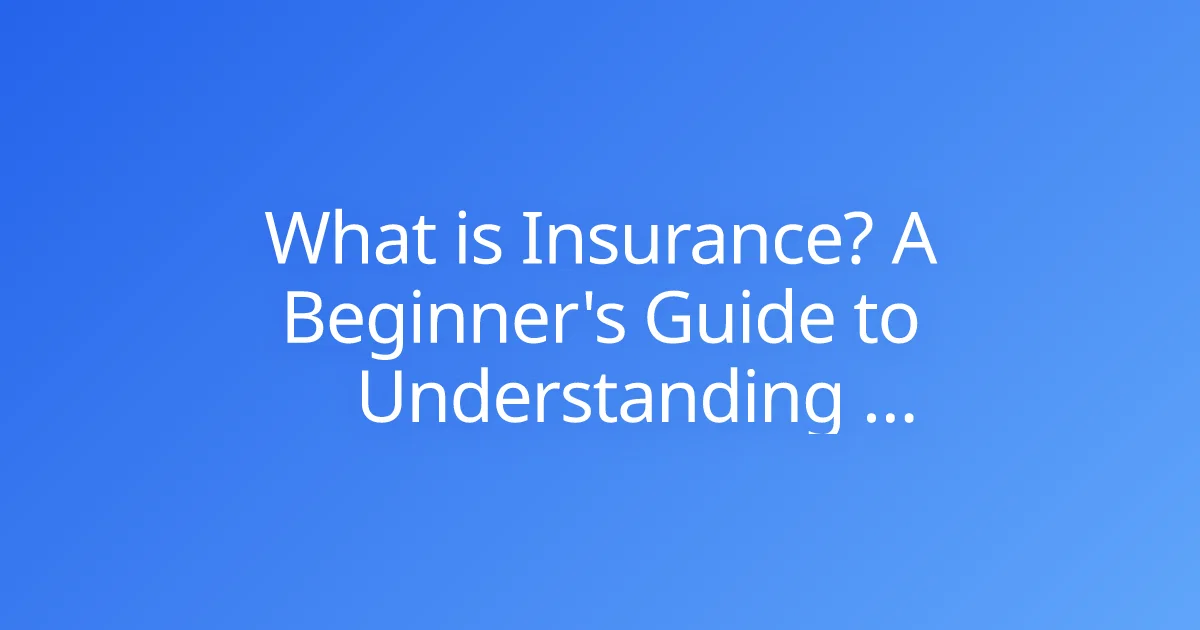Can You Have Multiple Life Insurance Policies?
A common question that arises for individuals considering their financial future and comprehensive protection is: "Can you have multiple life insurance policies?" Many people assume they can only own one policy at a time, or they worry about the complexities of managing more than one. The truth is, not only can you have multiple life insurance policies, but for many, it's a highly strategic approach to build a robust safety net tailored to evolving needs and financial goals.
This comprehensive guide will explain why owning multiple life insurance policies is not only permissible but often beneficial. We'll delve into the strategic advantages of layering your life insurance coverage, discuss the underwriting considerations, and provide practical insights to help you determine if this advanced financial planning strategy is right for your unique circumstances. Our aim is to demystify the concept and empower you to optimize your family's financial protection.
The Short Answer: Yes, Absolutely!
Let's address the core question directly: Yes, you can absolutely own multiple life insurance policies from one or several different insurance companies. There's no legal restriction or industry standard that limits an individual to a single policy. In fact, many individuals find that a combination of policies offers a more flexible and cost-effective approach to their changing life insurance needs than a single, large policy.
Think of it like building a financial safety net with different strengths and durations. Just as you might have multiple types of investments (stocks, bonds, real estate), you can have multiple types of insurance policies to cover different facets of your financial life.
Why Would Someone Need Multiple Life Insurance Policies? (The Strategic Advantages)
While a single policy might suffice for some, there are several compelling reasons why people strategically acquire and manage multiple life insurance policies. This approach allows for greater precision and adaptability in their financial planning.
1. Layering Coverage for Evolving Needs
Life is dynamic, and your financial obligations change over time. When you first buy life insurance, you might focus on covering a mortgage and childcare. Years later, those needs may decrease, but new ones, like college tuition or retirement income for a spouse, might emerge.
- Example: You buy a large 30-year Term Life policy to cover your new mortgage and young children. Five years later, you have another child and realize you need more coverage for a specific period (e.g., until your youngest turns 18). Instead of cancelling your existing policy or buying an even larger one, you can purchase an additional, shorter-term policy to "layer" on top of your existing coverage. As different financial obligations fade, the corresponding policies can expire, leaving you with what you still need.
2. Diversifying Policy Types (Term + Whole Life)
Combining different types of policies, such as Term Life insurance and Whole Life insurance, can provide a comprehensive solution.
- Term Life: Ideal for covering temporary, high-dollar needs (e.g., a mortgage, income replacement during peak earning years) due to its affordability and specific time frame.
- Whole Life: Provides lifelong coverage and builds cash value, which can be used for long-term goals like estate planning, final expenses, or as a source of accessible funds.
Many people find that a solid Whole Life policy for permanent needs, combined with one or more Term Life policies for temporary needs, creates an optimal strategy.
3. Addressing Different Financial Goals
Each life insurance policy can be earmarked for a specific purpose, offering clarity and ensuring funds are directed appropriately.
- Policy 1 (Term): Specifically designated to pay off the family home.
- Policy 2 (Term): Intended to cover children's college education costs.
- Policy 3 (Whole Life): Dedicated to providing a permanent legacy or covering final expenses.
This approach makes it easier to track and adjust coverage for each distinct financial objective.
4. Separating Coverage for Different Beneficiaries
In complex family situations, such as blended families or where different individuals have different needs, having separate policies can simplify beneficiary designations and payouts.
- Example: A person might have one policy naming their current spouse and children as beneficiaries, and a separate policy naming adult children from a previous marriage. This ensures specific amounts go to specific individuals without potential disputes or complex divisions within a single policy.
5. Maximizing Insurability Over Time
If you anticipate needing more life insurance coverage in the future but worry about your health changing, securing an initial policy (or two) while you are young and healthy locks in favorable rates. You can always add more coverage later if needed, potentially with different insurers or policy types, but your existing policies' rates remain unaffected by future health changes.
Understanding the Underwriting Process for Multiple Policies
While owning multiple life insurance policies is allowed, it's important to understand how insurers view this. When you apply for a new policy, the underwriting process will take into account all existing life insurance coverage you currently have or are applying for.
Total Coverage Limit (Financial Justification)
Insurers assess your "human life value" – essentially, how much coverage you can financially justify based on your income, assets, and financial obligations. There's a practical limit to the total amount of life insurance any one individual can carry across all policies. This prevents anti-selection (insuring for more than a reasonable financial loss).
- If you apply for a new policy, the new insurer will ask about your existing policies. They'll combine your current coverage with the requested amount to see if your total proposed coverage aligns with their underwriting guidelines for someone in your financial standing.
Medical Exams and Financial Underwriting
Each new policy application will typically require its own underwriting process, which may include:
- Medical Exam: A new medical exam might be required, especially for larger policies. Your health at the time of each application will determine the premiums for that specific policy.
- Financial Scrutiny: Insurers will review your income, assets, and liabilities to ensure the total coverage you are seeking is reasonable and justifiable.
The good news is that if you secured policies when you were younger and healthier, those rates are locked in. A new policy's rate will reflect your current age and health, but it won't impact your existing policies' premiums.
Key Considerations Before Stacking Policies
While beneficial, having multiple life insurance policies comes with considerations.
1. Affordability of Premiums
Each policy requires its own premium payment. While layering can be cost-effective in the long run by allowing policies to expire as needs diminish, ensure you can comfortably afford all premiums initially. Lapsing a policy due to non-payment defeats the purpose.
2. Complexity of Management
More policies mean more paperwork and more policies to track. You'll need to keep track of:
- Different policy numbers
- Premium due dates
- Beneficiary designations for each policy
- Contact information for each insurer
Using a centralized system (e.g., a financial binder or spreadsheet) to manage all your policies is highly recommended.
3. Total Coverage Limit (Financial Justification)
Be mindful of the aggregate limit an insurer or industry typically allows. If you apply for a new policy and your total coverage across all policies seems excessive for your income and financial obligations, the new application might be declined or the death benefit amount reduced.
4. Beneficiary Coordination
Carefully coordinate beneficiary designations across all policies to ensure your wishes are clear and there are no unintended overlaps or omissions. This is particularly important if you are using separate policies for different beneficiaries or specific goals.
Practical Strategies for Utilizing Multiple Policies
For those looking to implement this strategy, here are a few common approaches:
1. Laddering Term Policies
This is a popular strategy for managing life insurance needs as they change over time. Instead of one large Term Life policy, you buy several smaller ones with different term lengths.
- Example:
- Policy A: $500,000 for 30 years (to cover mortgage and long-term income replacement).
- Policy B: $300,000 for 20 years (to cover children's college education).
- Policy C: $100,000 for 10 years (to cover immediate debts).
As Policy C expires after 10 years, your debts might be paid down. After 20 years, Policy B expires, coinciding with your children finishing college. You're left with Policy A for your remaining needs, often at a lower cumulative cost than one massive 30-year policy.
2. Term Plus Permanent Combination
This strategy involves combining a Term Life policy for temporary, large needs with a Whole Life policy for permanent needs and cash value accumulation.
- Example:
- Whole Life Policy: $100,000 for lifelong coverage, primarily for final expenses and a small legacy, with a cash value component.
- Term Life Policy: $750,000 for 20 years to cover your peak earning years, mortgage, and young children.
This provides the best of both worlds: affordable high coverage when you need it most, and guaranteed lifelong protection with a savings element.
Conclusion
The answer to "Can you have multiple life insurance policies?" is a resounding yes, and it's a strategy that offers remarkable flexibility and precision in financial planning. By strategically layering different policy types and terms, you can create a highly customized safety net that adapts to your evolving life insurance needs – from paying off a mortgage and funding education to providing a lifelong legacy.
While managing multiple policies requires careful attention to premiums and beneficiary designations, the ability to tailor your financial protection to specific, temporary, and permanent obligations often outweighs the minor administrative effort. This proactive approach ensures your loved ones receive the specific support they need, precisely when they need it most, giving you unparalleled peace of mind.
Do you have more questions about structuring a multi-policy life insurance strategy, or would you like to share your experiences with layered coverage?



